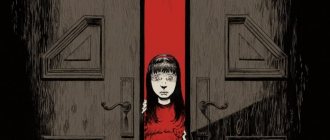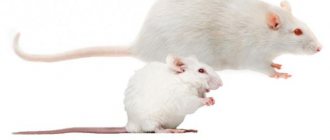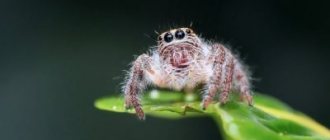Blatophobia is one of the few rare human phobias, which is translated from Latin as “fear of cockroaches.”
Cockroaches, like many insects, are long-lived in our habitat and have maintained their existence since ancient times. By scientific standards, today scientists count about 3,000 species of cockroaches, but many more species remain unknown and their discovery occurs regularly.
Blattophobia occurs for the same reasons as many phobias, namely as a result of psychological trauma in childhood. Everyone has long known that phobias do not arise on their own, and the cause of psychological trauma can be various factors, as well as unpleasant incidents. An example would be various horror films featuring infestations of giant cockroaches. A child, seeing this, can form a fear of these insects in his head and transfer his fear to real life. Another example would be if a child saw an adult’s inadequate reaction towards a cockroach (for example, screaming, fear).
A person who has this phobia at a moment of panic realizes that his fear is not at all justified, but there is nothing he can do about it. Accompanied by panic, a person begins to experience nausea, sweating, loss of orientation in space, and in some cases, loss of consciousness.
At the first sign of panic in a person suffering from this phobia (or even other phobias), he needs to be calmed down and brought to consciousness, put a cloth moistened with cool water on his head and given whatever, be it a soothing decoction or tablets.
At first glance, this phobia is not dangerous, but in rare severe cases, it can cost your life. This is due to the fact that in severe cases a person is not responsible for his actions and may grab any object and injure himself (for example, a knife), and may also experience paralysis of the entire body. Such cases are very rare, but if a child develops blattophobia, you should immediately consult a doctor in order to prevent this phobia at an early stage.
There are more than 900,000 known species of insects on earth, but the most resilient of these creatures of nature is the cockroach. Many millions of years ago, a small insect appeared that survived the era of dinosaurs, the Ice Age and still lives side by side with humans, causing great inconvenience both in everyday life and psychologically. There are people who are terrified of these “creatures.” What is the name of the phobia, is it possible to fight it alone?
Blattophobia - fear of cockroaches
Brief description of the phobia
Many of us dream of these nasty insects disappearing from the face of the Earth. They are associated with unsanitary conditions and infections. But there is a category of people for whom these insects cause not just disgust, but panic fear. They understand that their excessive worry is unfounded, but they cannot do anything about it.
Fear of cockroaches is a phobia that greatly interferes with a person’s life. Officially it is called blattophobia.
According to research by the International University of Psychology in Berlin, every tenth inhabitant of the planet suffers from this phobia, and this fear comes from childhood. In most cases, it occurs as a result of psychological trauma.
The cause of injury can be various factors. In childhood, ideas about the beautiful and the terrible are formed in our subconscious, and cockroaches clearly do not fall into the first category. Children's consciousness is influenced by the example of parents who mercilessly hit a small insect with a slipper and scream heart-rendingly. Cinema also strengthens this idea by making horror films in which the red cockroach plays the “main roles”.
Women are more likely to be afraid of cockroaches
Also, people with increased nervous excitability, when faced with cockroaches, experience an enormous stressful situation, which in the future can provoke the appearance of a phobia of cockroaches. Women are at risk. The fact is that tactile sensations are important for women, and bodily contact with a dangerous insect causes them a feeling of disgust, which can degenerate into an obsessive fear of cockroaches.
Why are people afraid of cockroaches
Cockroaches Fear of cockroaches
Cockroaches are the most ancient inhabitants of the Earth; they appeared more than 300 million years ago. During this time, a huge number of much stronger animals disappeared, but the disgusting insect surpassed everyone in endurance. Fear of cockroaches is one of the most common and ancient fears. This problem is called blattophobia. This fear is irrational, because they do not pose a direct threat to humans, it is quite easy to kill an insect, so what is the reason for this horror?
This species has long settled in human habitation. They cause problems by contaminating food with their waste products and pathogenic bacteria that they carry on their paws. They damage plants in houses and greenhouses, gnaw book bindings, leather items, and food.
How does blattophobia develop?
Most often, fear of cockroaches develops as a result of stress. Most often, this experience turns out to be quite traumatic, turning into a real phobia. Most often this happens in childhood, when the baby sees a negative reaction from parents or other people. Naturally, in his reaction he imitates the only familiar option.
But it also happens that a child develops independently. This may be due to watching films in which giant insects often appear. These could be killer cockroaches, alien insects and other creatures that are naturally feared.
Interesting!
Even Peter I had a phobia of cockroaches. This is especially strange because at that time cockroaches were considered a natural companion for humans and were a sign of well-being. The people with whom Peter stayed had to carefully clean the hut.
Symptoms
A person suffering from a phobia treats a cockroach not just as an evil spirit that should be urgently gotten rid of - the appearance of an insect causes real panic. The person begins to behave completely inappropriately, his heart rate increases, dizziness, and panic attacks occur. Hand tremors and severe weakness appear. In especially severe cases, hysterics, loss of consciousness, and attacks of suffocation are possible. It is impossible to predict the reaction of such a person; it cannot be controlled and greatly interferes with the patient himself.
If a person has a phobia of fear of cockroaches, he is aware that his fear is irrational, but he cannot do anything about it. Even after seeing an insect in a picture or on television, he may become very worried and experience signs of a panic attack. Often patients feel that they will die from the strength of their emotions. Psychologists say that in especially severe forms of the disease, a person may even be paralyzed with horror.
Important!
Blatophobia is one of those mental disorders that is difficult to treat, but is harmful to the person himself. That is why it is important to treat the pathology immediately after detection, without delaying it.
Treatment
To get rid of a phobia, you need to consult a specialist. The psychiatrist (and it is these doctors who should treat such conditions) will choose the most appropriate treatment method in a particular case. Regardless of why people are afraid of cockroaches, hypnotherapy is effective. This method makes it possible to program the subconscious. When the programs responsible for the fear of insects are “removed,” the phobia goes away. The difficulty of carrying out the procedure is that few patients agree to intervention in their subconscious, not wanting to lose control of themselves. In other cases, the results of manipulation appear very quickly and remain for a long time.
The second popular method is cognitive therapy. This method is based on the regularity of practical exercises leading to changes in behavior. Exposure therapy or desensitization method are used no less often. In this case, the patient is indirectly influenced by the object of his phobia, i.e. cockroach Gradually, getting used to it, a person is not so afraid. At the end of the course, controlled direct contact is allowed, even if the person is still a little afraid.
Symptoms of the disease
The most common symptoms are the following; they can appear individually or as a group:
- inappropriate actions and behavior (squealing, waving arms, etc.);
- an irresistible desire to avoid contact with insects;
- asthma attacks, heart attacks;
- uncontrollable sobs, hysterics (the person understands the absurdity of his behavior);
- lightheadedness or fainting;
- trembling in the body;
- nausea, sweating;
- throat spasm;
- stupor;
- panic.
Panic is a common occurrence when you see a cockroach.
Methods for dealing with phobias
Taking your fear of cockroaches for granted is not a solution to the problem, but a self-defeating escape attempt. Fear destroys a person's life, and it takes a lot of effort to become the master of your fear, and not remain a prisoner. Accept the problem, understand it and start fighting using an integrated approach. Cockroach phobia can be treated using psychotherapy or medication.
Drug treatment
Medicines are prescribed exclusively by a doctor. Self-treatment can lead to serious consequences.
The list of medications below is for informational purposes only.
- Tricyclic antidepressants (Fluoxetine, Sertraline).
- Weak tranquilizers (Phenazepam, Imipramine). They must be used directly during panic attacks.
- Tablets that block the feeling of increased anxiety during an encounter with an insect. These include Buspirone.
But medications can only help temporarily, directly during a panic attack, when the patient needs to be calmed down by giving a soothing decoction or pills.
Medicines must be taken as prescribed
Other methods to get rid of the problem
The main assistance in the fight against blattophobia can be provided by qualified psychotherapists or psychiatrists. They will teach you how not to succumb to phobias and reduce the negative impact of stress on the body. Treatment for each individual is selected individually, as it depends on many factors.
- Hypnosis is a state in which suggestibility increases and the absence of fear of a phobia is imprinted in the subconscious. Not all patients will agree to this method of treatment, all because of the same fear, but all phobias can be treated with hypnosis. The doctor puts the patient into a trance and, asking him leading questions, determines the true cause of fear.
Hypnosis against phobias
- The method of autogenic training consists in mastering the technique of self-hypnosis, in which a feeling of heaviness arises in the body, as a result of which a state of muscle relaxation is achieved, the so-called. relaxation. To do this, you need to turn on calm music, relax, even out your breathing, turn off your emotions, close your eyes and start saying self-hypnosis phrases: “I am brave.” I easily overcome my fear”, “I know that my fear is created by me, which means I can overcome it”, “I turn off my fear of (cockroaches) for the whole day.”
- The practice of yoga is a good helper in the fight against phobias. Regular yoga classes provide an outlet for our fears, gradually eliminating the level of anxiety.
- One of the effective techniques in struggle is to face your fear. By overcoming yourself, you will overcome your phobia. The exit should not be rapid, but gradual.
- Playing sports in the fresh air is a cure for many diseases, including blattophobia.
How to get rid of fear
At an early stage, you can cope with fear on your own. For moderate phobias, it is better to consult a doctor; in severe cases, medication may be needed. But first things first.
Help from a psychologist
For professional treatment, one of the following methods can be chosen:
- Hypnosis. The psychologist puts the client into a trance and reprograms the consciousness, changing the negative attitude to a healthy attitude towards cockroaches. This method is suitable for suggestible people without secondary mental disorders and at a mild stage of phobia.
- Virtual approach to the object of fear. Using a virtual reality helmet, the client is immersed in the world of cockroaches, the psychologist helps to control the condition and reminds them that these are virtual insects. This method can only be used under the supervision of a psychologist, at a mild stage of the disorder. At an advanced stage, such therapy will cause shock, severe fear and a panic attack.
- Cognitive behavioral therapy. The client and psychologist make a list of frightening situations. After this, they are played one by one. For example, first the patient looks at a photo of cockroaches, then a video, then at live insects behind glass, etc. At each stage, the specialist reminds about methods of self-control and new (pre-developed) response models.
- Neurolinguistic programming. During the sessions, the client realizes the irrationality of his perception, and together with the specialist he creates a new picture of reality.
Art therapy and fairy tale therapy are used to treat children. You can come up with a fairy tale yourself. It is important that the cockroach is described there in a positive way. But within the framework of art therapy, you can depict how a child overcomes his fear, defeats an evil cockroach. When working with school-age children, you can study the encyclopedia, get acquainted with the characteristics of individual insects, and approach fear with the help of illustrations. And, of course, parents should control their reactions and not react by screaming at cockroaches.
It is important! The treatment method is selected individually depending on the client’s characteristics and medical history. Sometimes a combination of several psychotherapy methods is used.
Methods for correcting the condition
As an additional treatment for rapid correction of the condition in case of severe anxiety, sleep problems, hallucinations and panic attacks, the psychotherapist prescribes antidepressants, beta blockers, tranquilizers, and psycholeptics.
Getting rid of the fear of cockroaches on your own
As part of self-help, you can use auto-training. First you need to relax your body and brain, take a comfortable position, turn on soothing music or retire in silence and repeat the installation for self-hypnosis: “I conquer my fear”, “I created my fear myself, now I myself let it go”, “I am not afraid of cockroaches” "
It is recommended to consider auto-training as an auxiliary means of self-medication. The main method is a gradual approach to the object of fear. Only by overcoming yourself and looking fear in the eyes can you get rid of a phobia. Conduct auto-training, and then look fear in the eyes. If you feel bad, repeat affirmations and breathe deeply. You can invite a person who does not have blattophobia to visit, and together with him look your fear in the face.
This is interesting! In some countries, certain types of cockroaches are considered a delicacy. Why don't you literally bite the head off your fear?
Blatophobia is one of the few rare human phobias, which is translated from Latin as “fear of cockroaches.”
Cockroaches, like many insects, are long-lived in our habitat and have maintained their existence since ancient times. By scientific standards, today scientists count about 3,000 species of cockroaches, but many more species remain unknown and their discovery occurs regularly.
Blattophobia occurs for the same reasons as many phobias, namely as a result of psychological trauma in childhood. Everyone has long known that phobias do not arise on their own, and the cause of psychological trauma can be various factors, as well as unpleasant incidents. An example would be various horror films featuring infestations of giant cockroaches. A child, seeing this, can form a fear of these insects in his head and transfer his fear to real life. Another example would be if a child saw an adult’s inadequate reaction towards a cockroach (for example, screaming, fear).
A person who has this phobia at a moment of panic realizes that his fear is not at all justified, but there is nothing he can do about it. Accompanied by panic, a person begins to experience nausea, sweating, loss of orientation in space, and in some cases, loss of consciousness.
At the first sign of panic in a person suffering from this phobia (or even other phobias), he needs to be calmed down and brought to consciousness, put a cloth moistened with cool water on his head and given whatever, be it a soothing decoction or tablets.
At first glance, this phobia is not dangerous, but in rare severe cases, it can cost your life. This is due to the fact that in severe cases a person is not responsible for his actions and may grab any object and injure himself (for example, a knife), and may also experience paralysis of the entire body. Such cases are very rare, but if a child develops blattophobia, you should immediately consult a doctor in order to prevent this phobia at an early stage.
Reading time: 17 minutes. Published 08/18/2019
Alternative medicine for treating insect fear
As a sedative for neurasthenic conditions, tincture of peony, motherwort, and hawthorn is used, 25-35 drops 3 times a day, the course of treatment is a month. For general calming of the nervous system, take fresh motherwort herb juice 30-40 drops 3-4 times a day 30 minutes before meals. For neurasthenic conditions, you can also use the following decoction: pour 1 tablespoon of peppermint leaf into 1.5 cups of hot water, cook for 15 minutes over low heat, take 0.5 cup three times a day.
The main thing is to promptly recognize the presence of a problem, do not delay treatment and visit a specialist who will definitely be able to help you overcome your fears.
Blatophobia and its characteristic manifestations. The article will describe techniques that can really help you get rid of the fear of cockroaches.
Contents of the article: Fear of cockroaches is a fairly common phenomenon, because such insects have an unattractive appearance and actively reproduce in human homes. No one is safe from the appearance of the sounded misfortune, because the most ancient inhabitants of the planet tend to migrate. Therefore, the fear of cockroaches must be eliminated, because an encounter with them can happen at any moment and end in a completely unexpected way.
Causes of blattophobia
Hatred of insects and real panic in front of them are different.
In the first case, it is, rather, just disgust that does not require correction, and in the second, it is the need to work on oneself. Fear of cockroaches in very rare cases occurs in a person from birth. Psychologists, among all the available sources of the voiced pathology, identify the following factors in the development of blattophobia:
- Experienced stress
. Children are very susceptible to everything that surrounds them. They might have been frightened at one time by any situation in which a cockroach was present. Initially, the child does not perceive this insect as an aggressor for no apparent reason. - Stereotypes
. Parents of some children pass on existing blattophobia to their offspring. If dad or mom reacts with horror or outright disgust to the cockroach they see, then their child will react in the same way in the future. Ladies are especially prone to panic attacks. - Children's literature
. For an adult, Korney Chukovsky’s poem “The Cockroach” does not evoke any special emotions. However, in children, such a work can create a certain kind of fear. They especially do not understand the moment when large animals and predators were afraid of this small insect. The child's subconscious imagines it to be of simply unprecedented size, then attributing non-existent possibilities. - Horror
. The modern film industry presents its products for every taste. However, horror films like “Invasion of Cockroaches”, “Human Eaters”, “Houses with Cockroaches” and “Mutants-3/Guardian” do not add sympathy for such insects. Their giant copy enlarged to enormous sizes may well provoke the appearance of blattophobia. - Repulsive looking insect
. Exclusively entomologists will appreciate the external characteristics of the cockroach. Fear, disgust, rejection are the main reactions when an unwanted guest appears in a person’s field of vision. - Spread of infection
. Like flies, cockroaches are considered the main sources of all kinds of infection. This statement is true, because such an insect can bring diphtheria, tuberculosis and even leprosy into the house. Against the background of fear of various diseases, a person often develops a fear of cockroaches.
Important! Any home must be urgently cleansed of the voiced evil spirits. Fear is fear, but it’s definitely not worth risking your physical and mental health because of small insects.
How to treat?
To get rid of blattophobia you need to consult a specialist. In this case, a qualified psychotherapist will come to the rescue and select the most suitable treatment option for the patient. There are four most effective methods for combating such fear. The first is hypnotherapy. It makes it possible to program the subconscious, removes fear of insects from memory and ultimately inspires that cockroaches in the house are not a reason to panic. The only catch is that few patients are ready to lose control of themselves and let someone into their subconscious.
Next comes neurolinguistic programming. It is based on NLP sessions, during which a person’s consciousness is switched to another mode and a new attitude is created to the reality around him. Sometimes specialists are forced to resort to the help of modern technology. A virtual reality helmet is best suited for this. It is placed on the patient’s head and he finds himself surrounded by cockroaches, but completely safe. As a result, this should develop a clear association of insects with the absence of even the slightest threat.
And finally, the last technique is cognitive therapy. During its implementation, the psychotherapist begins practical exercises and models certain types of situations. First, the cause of the problem is found out, and then there is a theoretical part, where they teach how to control their emotions and find a way out during frightening events.
The main danger for blattophobes
Aggression at the sight of the described insects applies to any species. However, blattophobes still give the following rating of their internal fears:
- Red cockroaches (Prussians)
. Basically, it is this species of cockroaches that attacks people's homes. Insects of this color are quite small in size, but reproduce at the speed of sound. Just the sight of them makes blattophobes disgusted, but they don’t faint. As they say, there is little pleasant in this spectacle, but it is not fatal. - Black cockroaches
. This type is especially troublesome for people who live on the ground floor. They usually live in basements and reproduce more slowly than their red-haired counterparts. However, it is their size that makes blattophobes afraid of them more than the Prussians. - Exotic cockroaches
. In this case, we are not talking about just disgust and fear on the part of a person who is afraid of such insects. Many people experience a state of horror when meeting this barbel, because in some cases it can reach 10 cm.
Treatment
The good news for people with a fear of cockroaches is that the condition can be treated. There are many treatments available to help overcome the disorder.
Gradual desensitization and exposure therapy are some of the most common ways to overcome zoophobias such as blattophobia. Treatment involves looking at photos of cockroaches, touching a dead insect, and gradually working your way up to being comfortable in a room with cockroaches without experiencing panic attacks.
Hypnotherapy is another effective way to overcome fear. He can help when it is necessary to understand the causes of fear and change thoughts about cockroaches.
Cognitive behavioral therapy and psychiatric therapy do a good job of rationalizing blattophobia.
Cockroaches are rather unpleasant insects, but they do not pose an immediate danger to humans. However, some people experience extreme fear of these creatures. This fear is a mental disorder and is called blattophobia. Another name for this disease is katsaridaphobia. Let's figure out what this pathology is, the reasons for its occurrence and ways to combat it.
Manifestations of fear of cockroaches in humans
At the sight of one cockroach or in the company of its fellow tribesmen, some people behave as follows:
- Panic attack
. A person who has directly encountered the object of his categorical non-perception begins to literally become hysterical. His behavior ceases to be adequate because he can afford to squeal or jump onto the nearest high surface. - Irrational actions
. The victim himself, deep down, understands perfectly well that his fears and actions during a panic attack have nothing to do with common sense. It can shock those closest to you if relatives are accustomed to seeing their family member as a reasonable person. Blattophobe also constantly treats his home with all kinds of poisons, even if his house has not been affected by an invasion of uninvited guests. - Somatic manifestations of horror
. Even by the appearance of a blattophobe, you can determine that he is scared to death by the sight of a cockroach or a whole flock of insects. His hands begin to tremble, his body begins to sweat, and even a temporary stutter occurs. - Disgust
. Blattophobes can react absolutely calmly to reptiles, spiders and caterpillars. Such listed representatives of the fauna also, in most cases, do not have an attractive appearance. However, they do not cause trembling in people who are terrified of cockroaches.
The listed symptoms of such a thing as blattophobia are a serious obstacle to the normal existence of the subject. Any phobia in itself limits a person’s life activity to one degree or another.
Etiology of the phenomenon
It happens that a person simply does not like cockroaches and this is normal, i.e. we are not talking about a disease here. Everything can be explained by a banal feeling of disgust, which does not require treatment. In other cases, a person panics at the sight of a mustachioed insect, this already indicates psychological pathology, such people are called blattophobes.
The following factors can provoke the disease:
- Childhood stress. A person, while still a child, could become a participant in a situation in which there were cockroaches. After such an event, negative memories may remain in the memory, provoking fear of insects.
- Hereditary factor. Of course, blattophobia is transmitted at the genetic level, but if a child’s parents experience an uncontrollable fear of insects, then one can most likely expect that the children will also suffer from a similar phobia.
- Children's fairy tales. A child’s wild imagination can draw an evil monster in the form of a cockroach, for example, after reading Chukovsky’s poem “Cockroach,” because everyone was afraid of this anti-hero in the fairy tale.
- Films featuring scary cockroaches. The modern film industry boasts a huge number of films where the roles of the main characters go to insects. While watching such film projects, a person may form the wrong idea about cockroaches. In such films, small insects are presented as huge destroyers, killing people and destroying everything in their path.
- Repulsive look. Not a single species of cockroach can boast of attractiveness. All of them are disgusting to one degree or another.
- Diseases. Everyone knows that insects can be carriers of various diseases. Among patients with blattophobia, there are many who are simply afraid of catching something from cockroaches. Especially if a person is already sick with something after an insect bite.
Blattophobic celebrities
It should immediately be noted that cockroaches evoke warm feelings and bright emotions only among researchers in this field.
Famous people with a fear of cockroaches:
- Peter
I. The Russian Tsar was always distinguished by his firmness of spirit and iron character. Having set himself difficult political tasks, he went headlong towards achieving his goal. However, his extremely negative attitude towards cockroaches was known to all the courtiers. If Peter the Great, while moving around his domain, stopped in any room, then it was carefully checked for the presence of the described insects. One of the subjects decided to play a trick on the king by nailing a cockroach to the wall. Peter I appreciated this kind of humor, giving the merry fellow cuffs and slaps in the face. - Scarlett Johansson
. The actress, who is famous for her acting skills and excellent appearance, is one hundred percent blattophobe. She had never liked these insects before, which caused her an attack of acute rejection. However, after she woke up and felt a cockroach on her face, the actress always falls into outright panic at the sight of the described insect. - Woody Allen
. Four Oscars, however, did not stop him from being a well-known eccentric. He is afraid of literally everything and suffers from a large number of phobias. In addition to being afraid of dogs, the sun, and children's elevators, Woody Allen is very afraid of cockroaches. If his other fears look somewhat ridiculous, then the great master’s blattophobia can be understood. - Nadine Coyle
. The actress and singer from Ireland is afraid of many animals. She is afraid of dogs, cats, snakes and rodents because they can bite her. Nadine hates cockroaches because they are visually disgusting to her. - Johnny Depp
. The fearless hero of many films, known to the general public as Captain Jack Sparrow, once forked out 10 thousand dollars. He literally trashed a luxurious room in a prestigious hotel. Johnny explained his violent and inappropriate behavior by saying that he imagined a huge cockroach in the room, for which he began an active hunt. - Philip Kirkorov
. The “bunny” of the national stage cannot stand air travel, which is inevitable for his career. However, he does not perceive frogs and cockroaches organically. During one of the programs, a toad of considerable size was brought into the studio. Kirkorov's lamentations concerned his admission that he was not afraid of snakes, but it was better for frogs and cockroaches to stay away from him. - Ilya Lagutenko
. The leader of the Mumiy Troll group is horrified by one type of insect being described. After bitter experiences in the past, he also does not like encephalitis ticks. From his demeanor one can conclude that the singer dislikes insects without exception.
Ways to deal with the fear of cockroaches
Fear of cockroaches is a very complex disease because it is difficult to correct. Treatment of blattophobia may take a short period of time if you approach this issue with all responsibility.
Drug treatment of blattophobia
For mental pathologies of any nature, one cannot do without the use of medications. Therapy to get rid of blattophobia usually consists of using the following miracle pills:
- Antidepressants of the tricyclic group
. When taken, certain substances in the human body are activated, which in medicine are called neurotransmitters. For blattophobia, the psychotherapist usually prescribes Sertraline, Moclobemide or Fluoxetine to his patient. - Benzodiazepines
. These developments in medicine are considered weak tranquilizers. When a panic attack begins, these medications should be taken. Phenazepam, Imipramine or Alprazolam have proven themselves to be excellent in the treatment of blattophobia. - Beta blockers
. They are primarily used to treat cardiovascular diseases. However, panic attacks deal a crushing blow precisely to this area of the human body. Therefore, they are simply necessary in the complex treatment of blattophobia. - Psycholeptic drugs
. The use of the indicated drug therapy is necessary to relieve increased anxiety when seeing cockroaches. Buspirone is one of the best medicines when it comes to fear of insects.
Help from a psychotherapist in dealing with blattophobia
Any specialist will immediately tell his patient that taking medication alone is definitely not enough. Tranquilizers and antidepressants will only help relieve tension temporarily if you do not undergo the following therapy:
- The “virtual cockroaches” method
. With this method of combating blattophobia, a situation is created in which the patient finds himself alone with the subject of his fears, while being completely safe. A helmet equipped with displays and video cameras is placed on the patient’s head. Consequently, a person who is afraid of cockroaches is simply surrounded on all sides by these insects, which are just virtual objects. - Hypnosis therapy
. For any phobia, the therapist will advise the affected party to release their “inner beast.” This occurs best when the patient is in a trance state. In the future, only the blattophobe will decide about the advisability of the announced event, because most people are simply afraid of it. - Neuro-linguistic programming
. This method allows us to understand the model of reality that a person has created for himself. During NLP sessions, the so-called “reprogramming” of consciousness occurs and the creation of a new attitude to the surrounding reality. - Cognitive therapy
. During practical classes, so-called situation modeling is performed. After finding out the cause of the problem, the patient begins to learn how to control the unpleasant and frightening events in his life.
How to get rid of blattophobia - watch the video: If a blattophobe does not know how to overcome the fear of cockroaches, then he should listen to the advice voiced in the article. In severe forms of this pathology, everything can end in convulsions and even paralysis.
- sad experience of encountering stinging insects (painful bites or severe allergic reaction);
- lack of awareness of the real danger of various insects;
- unpleasant associations with insects, if in childhood you became an involuntary witness to some nasty scene with their participation;
- inappropriate behavior of parents (if the child was frightened in childhood with fairy tales about the Cockroach or the parents themselves were afraid of insects).
If the fear of insects greatly affects your life, it would be wiser to consult a psychologist: attempts to cope with the phobia on your own can take years and lead to the opposite result. Signs of a phobia include the following:
- an encounter with an insect causes you to become very excited, dizzy, sweating, and have inappropriate reactions;
- when you encounter an insect, you feel panic and try to leave the room or hide;
- you wear closed clothes and treat your home with repellents “just in case”, avoid opening windows or going outside, and refuse to relax in nature.
If you are sure that everything is not so bad and are determined to get rid of your fear, let's do it together. Winter is the best time; you will have time to prepare for the first flies. First of all, theoretical preparation is necessary.
- If you or your family members have had a very strong allergic reaction to bites in the past, take the time to visit an allergist and find out what medications should be in your home and country medicine cabinet and how they should be used. All family members should have this information. In this case, your fear is justified, but you should not be afraid of flies if you are allergic to bees. Decide on the circle of potentially dangerous contacts and learn how to properly protect yourself from them.
- Try to remember the moment after which you began to be afraid of insects. Having dug deep into my childhood, I remembered that I could spend hours watching insects, catching butterflies, colored bugs and grasshoppers in a jar, freeing flies from cobwebs, and only squealed and ran away at the sight of cockroaches, which everyone was afraid of. But one day at a children's camp, having grabbed a particularly large and beautiful grasshopper, I discovered that it had galloped away from me, leaving only a twitching paw in my hand. Then, numb with horror, they told me that locusts (and that was it!) and grasshoppers cast off their legs like a lizard’s tail, but nothing could calm me down: how can you run away without a leg?! And you don’t even need a tail, what an abomination! So suddenly, on a sunny summer day, I immediately developed a dislike for all insects. It was very useful to remember this; already at this stage, my attitude, if not towards insects, then at least towards my fear, became different: I realized how unreasonable it was.
- Study the insects that you fear most: find out what they eat, how they reproduce, whether they attack humans and in what cases, how dangerous these attacks are, how you can avoid them. It is likely that you will be surprised to learn how harmless the insects that you can meet in everyday life are.
- Try to find something cute and beautiful in insects. Now, reading these lines, you think that this is impossible. I thought so too, until Google gave me a tiny dancing peacock spider. Try to find an insect that is at least a color you like, you have to start somewhere! Regularly look at photographs; it is advisable, of course, to start with the prettiest specimens. When they no longer cause fear, take an interest in other species. Maybe not right away, but you will definitely get rid of disgust. If you look into the rainbow eyes of a fly every day, someday you will at least become indifferent to them.
- Imagine the most terrible consequences of your encounter with an insect. What exactly are you afraid of? What will happen to you if your fears come true? Should we be afraid of this? Calculate all the consequences of the most undesirable option and model your actions. For example, I'm afraid of spiders. Most of all I am afraid that when I drive the spider out of its home, it will jump on my hand. What's so scary about that? He will run his paws along my hand, it will be difficult to shake him off, I will accidentally crush him and get dirty. Stop. What's so scary about that? Well, nothing. Just 15-20 times, swearing, soaping my hands under hot water - and now I’m fine.

The following points relate to direct encounters with insects. Of course, it is better that these meetings always take place in the presence of a person with whom you feel confident, but we will act according to the circumstances.
Don't run from your fear
When you encounter a non-dangerous insect (it is assumed that you will still take the trouble to find out who is really dangerous to you), try to relax, breathe deeply, and smile if possible. It may seem to you that your horror will increase endlessly, but this is not so. Anxiety, while growing rapidly, in the absence of real damage to the body, subsides very quickly. In just a couple of minutes you will begin to calm down. Further actions depend on how calm and confident you are.
Set your goals in advance
Plan your actions when encountering insects in order from easiest to most difficult. For example, you would like to be able to independently expel unwanted insects outside the apartment. Your goals for the next couple of months might look like this:
- stay in the same room with the insect for 2–3 minutes;
- approach him at a distance of 2–3 meters;
- observe the insect from a distance of 1 meter for a couple of minutes;
- cover the insect with a jar (here you can start with a bucket glued to a two-meter stick - the main thing is that you feel relatively comfortable);
- move the insect, covered with a jar, onto a thick sheet of paper and throw it out the window.
Get together and do it
Take action despite your fear. Just take a slipper and show who's boss. Or take a can, a newspaper and evict your enemy. Or reach out and pick up a spider. Thinking for a long time does not make you more confident, sometimes you just need to act. You are stronger than you think, just believe in yourself.
Think how much better you will feel if you stop flinching at any buzzing noise behind your back. Don't justify your fear, get rid of it!
The fear of cockroaches is officially called blattophobia. There are not so many lovers of these vile creatures; the rest of humanity is ready to wipe these hated creatures off the face of the earth. But negative emotions and phobia are completely different things.
Help from a psychologist
Why people are afraid of cockroaches, the answer must be sought in distant childhood.
Knowing the cause of fears, you can solve the problem using special techniques to influence a person’s subconscious. It also happens that a person does not remember how it all began. You have to find out the root cause under hypnosis. There are several methods to overcome the fear of cockroaches:
- Hypnosis therapy. The patient is put into a trance state and asked to release his “inner beast”, which prevents him from living fully. A psychologist can voice released emotions if the patient insists on it.
- Visualization of cockroaches. It is difficult to imagine how this method works. A healthy person may develop a phobia of Prussians after such a spectacle. However, experts say that the method is effective. The patient is put on a helmet. They create a virtual protective shell around, and a horde of cockroaches appears behind it. They cannot reach the person, he is happy about this and calms down.
- Cognitive therapy. They simulate different situations, several options for behavior when seeing a Prussian dog. If the situation happens in reality, the patient knows how to control himself and how everything can end.
- Neuro-linguistic programming. They influence the subconscious. With the help of sessions, reprogramming is carried out, changing the attitude towards cockroaches.
Additionally, medications are prescribed that help cope with panic attacks, calm down, lower blood pressure, and return to normal. The course consists of antidepressants, benzodiazepines, beta blockers, and psycholeptics. Medicines are prescribed by specialists.
Many people dislike insects such as cockroaches. After all, they look quite unpleasant in appearance and can actively multiply in a residential building, bringing unprecedented discomfort to a person. There are people who simply find such roommates unpleasant; they are terrified of them. This fear is called blattophobia.
Causes of the disease
From childhood, a child develops in his subconscious what insects are good, harmless, cute, and which are vile and disgusting. Adults help shape these data. They are the cause of the development of the disease in the younger generation. As adults, men and women behave inappropriately at the sight of a small, mustachioed creature.
- They influence the formation of relationships with parents and close circle. If adults are hysterical at the sight of a cockroach, there is a high probability that over time a child will do the same.
- Even in kindergarten, little children study the work of Korney Chukovsky “The Cockroach”. For some unknown reason, all the animals were afraid of the small mustachioed insect. The child draws a terrible, huge creature in his imagination, attributes unreal abilities to it, and fear develops.
- There is nothing attractive about the appearance of a cockroach. The accumulation of such vile creatures disgusts many. In some representatives of humanity, it provokes not just fear, but blattophobia. Adds fuel to the fire once experienced stress, for example, if or. As in the case of Scarlett Johansson: the celebrity woke up in one of the hotels with a cockroach on her cheek.
- Insects that live in basements, garbage cans, and other unpleasant places spread the infection. They are capable of: diphtheria, leprosy, tuberculosis.
- Horror films featuring huge cockroach monsters are deposited deep in the subconscious. Especially if a child is watching the film. When you see a small insect, your memory brings to mind that huge monster that devoured people in an instant.
Fear of cockroaches develops for various reasons, but manifests itself in the same way in everyone.
conclusions
Blattophobia is a type of zoophobia and is a pathological fear of cockroaches. The phobia may be based on a childhood experience associated with an insect, or an inadequate reaction of a significant adult to its appearance. You can cope with fear on your own, however, in serious cases it is very difficult. Therefore, it is better to consult a psychologist or doctor who will help you understand the reasons and choose the best treatment methods.
Cockroaches are rather unpleasant insects, but they do not pose an immediate danger to humans. However, some people experience extreme fear of these creatures. This fear is a mental disorder and is called blattophobia. Another name for this disease is katsaridaphobia. Let's figure out what this pathology is, the reasons for its occurrence and ways to combat it.
Fear of cockroaches is a fairly common problem. These insects live in apartments and houses and multiply quickly. They are quite unattractive in appearance, so they evoke hostility, disgust and disgust. But for some, these negative emotions turn into real horror.
It is believed that women are more susceptible to blattophobia, since their skin is more delicate and sensitive, and the touch of an insect causes a lot of unpleasant sensations. In fact, men also often experience fear of cockroaches.
First of all, it is necessary to understand the reasons why this phobia occurs. Psychotherapists identify several of the most common reasons:
- Negative experience
. Most often this happens in childhood. If a child is very frightened of some situation related to cockroaches, negative memories of the event can become entrenched in the mind and develop into a phobia. A small child does not know that a cockroach is a harmless insect and perceives it as a dangerous aggressor. - Upbringing
. If parents themselves are afraid of insects and panic when they appear, then the child can adopt the phobia. - Fairy tales
. A small child who is read fairy tales where cockroaches appear as negative characters may think that these are very dangerous insects that should be kept away from. A striking example of such a fairy tale is the famous work of Korney Chukovsky “The Cockroach”. - Horror films.
Modern cinema often traumatizes the fragile child’s psyche, especially when it comes to horror films. Directors of such creations often present insects in a terrible light, thereby causing negative emotions in the viewer. These include the films “Invasion of Cockroaches”, “Human Eaters”. If a child watches such films, he may develop a fear of cockroaches. - Unattractive appearance of the insect.
Cockroaches look rather unattractive and even repulsive, and few people arouse sympathy. For some individuals, hostility towards these creatures can reach the point of panic. - Common infections.
Cockroaches, like many other insects, not only spoil food, but also spread dangerous infectious diseases. Fear of contracting a serious illness can cause fear.
Signs of illness
Phobia - the fear of cockroaches makes adults sweat, shake, squeal, and behave inappropriately.
- The person begins to sweat, the heart begins to beat vigorously, the face turns red, and trembling appears in the limbs.
- The patient jumps up on a chair and climbs onto any height. Sees nothing around except a small cockroach.
- Phobia of cockroaches leads to loss of consciousness and hysteria. The person begins to scream, scream, and hide behind those present. If there is no one else in the room, the situation is much worse for the patient.
- The patient is quite calm about snakes, lizards, rodents, and unpleasant living creatures, but is terribly afraid of Prussians. This is the true sign of the disease.
Blattophobia is also expressed in constant prevention against cockroach infestation at home. A person without a single insect in the house constantly spends, crushes, and arranges. Just to protect yourself.
Interesting!
Everyone can be afraid of cockroaches, but a phobia interferes with life and does not give peace. All his subjects knew about the fears of Peter I. Before the emperor entered the castle, a thorough search was carried out, looking for,.
Reasons for the development of fear
If you don’t like these insects, feel disgust towards them, and are afraid of them appearing in your home, this is not yet a sign of blattophobia. But if you cannot cope with your feelings, you easily succumb to panic and stress at the sight of a small bug - this is a sure sign that you have developed a phobia of cockroaches. There are many reasons for this:
- Stressful situation. As a rule, it arises and develops in childhood, when the child has experienced fear and negative emotions associated with cockroaches;
- Upbringing. Fear of insects is passed on from parents to children - adults, having a phobia, do not notice how they pass it on to their children, raising them in fear of insects;
- Literary and cinematic works. In books and movies, cockroaches are presented as negative characters and are used to add more poignant moments to the plot - after reading such a work or watching a film, a child begins to dislike and fear insects, associating them with imaginary monsters;
- The unpleasant appearance of insects can also create in a person a feeling of fear towards them;
- Infections. Most often, people are afraid that these insects can be carriers of various diseases, so they do everything possible to prevent them from appearing in their home.













